Sonos Era 100 Review
Bringing the bass to Sonos' smallest home speaker
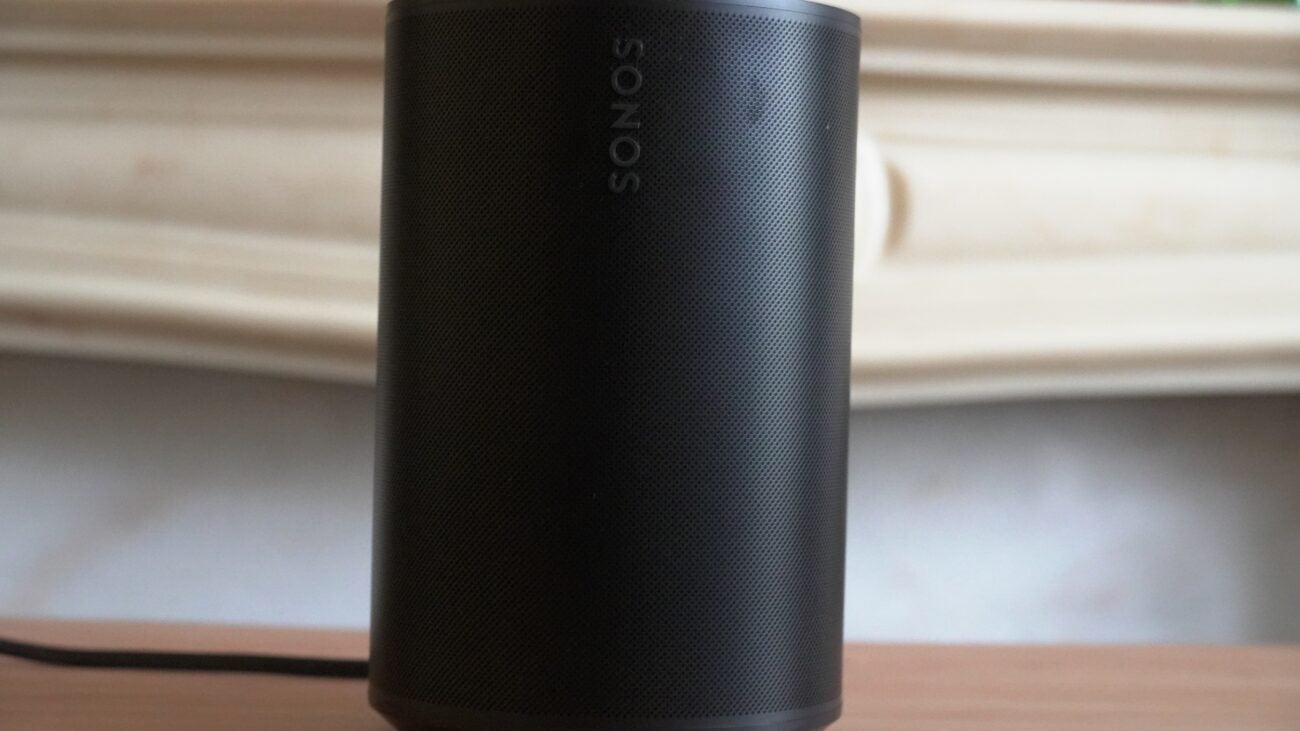
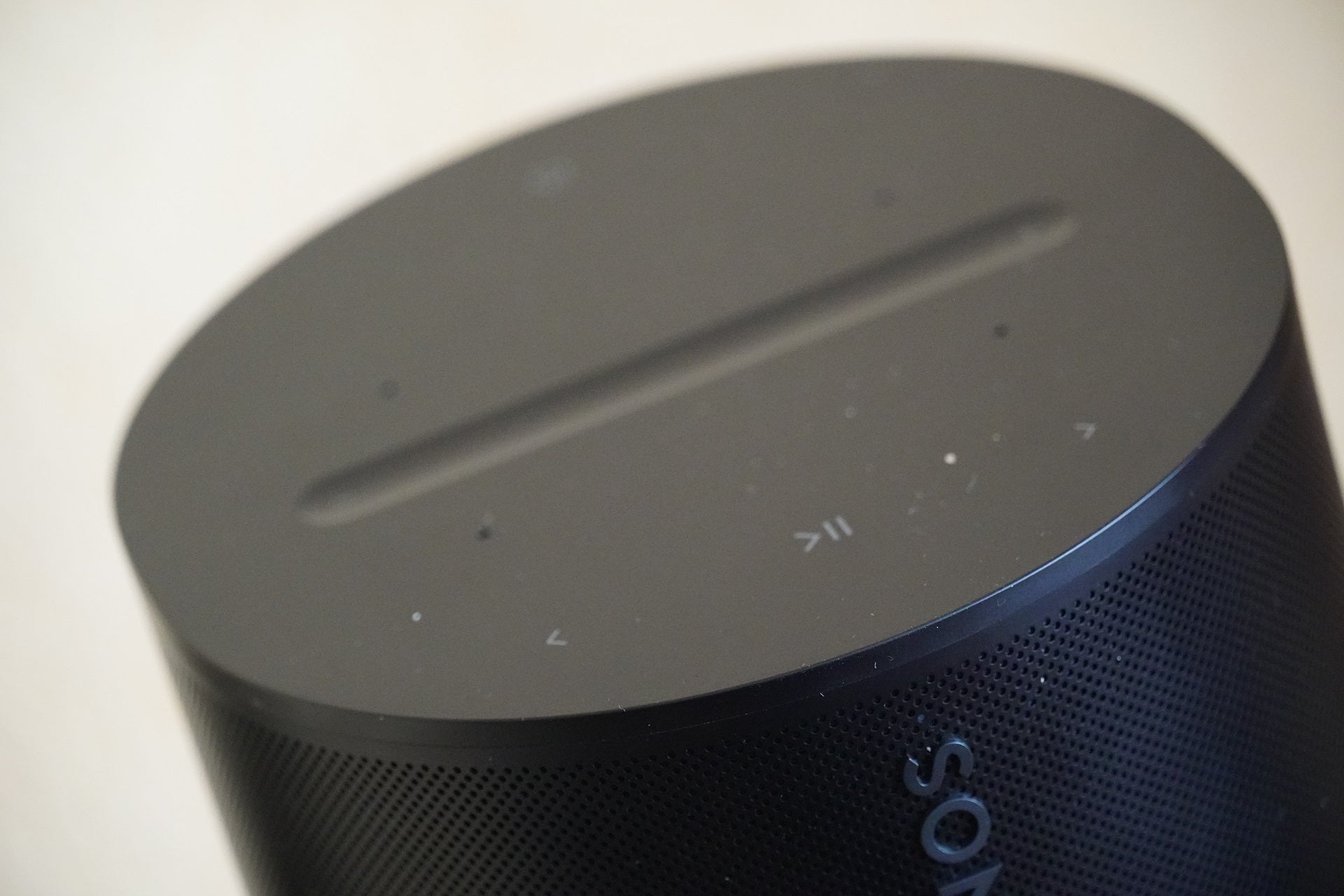
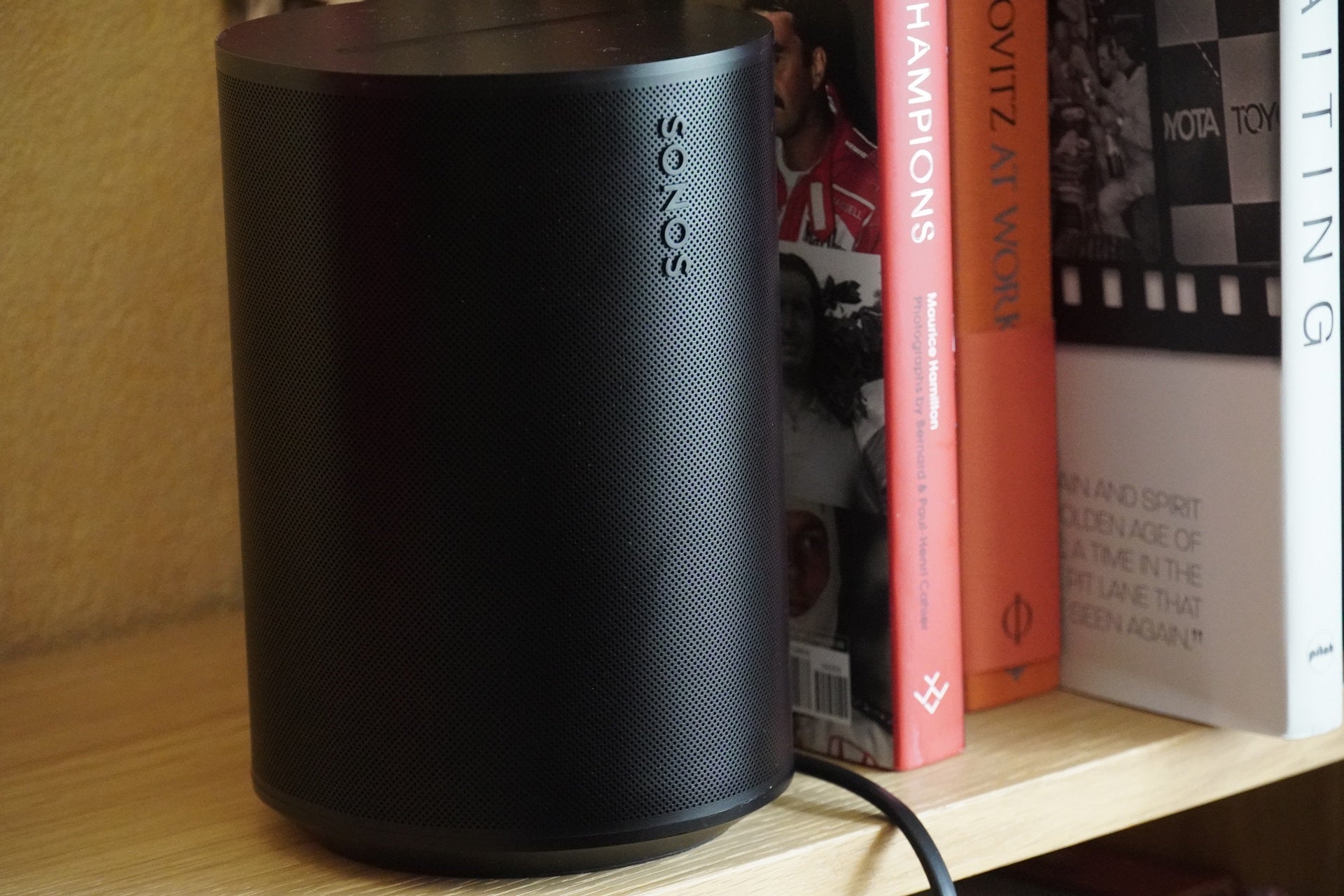
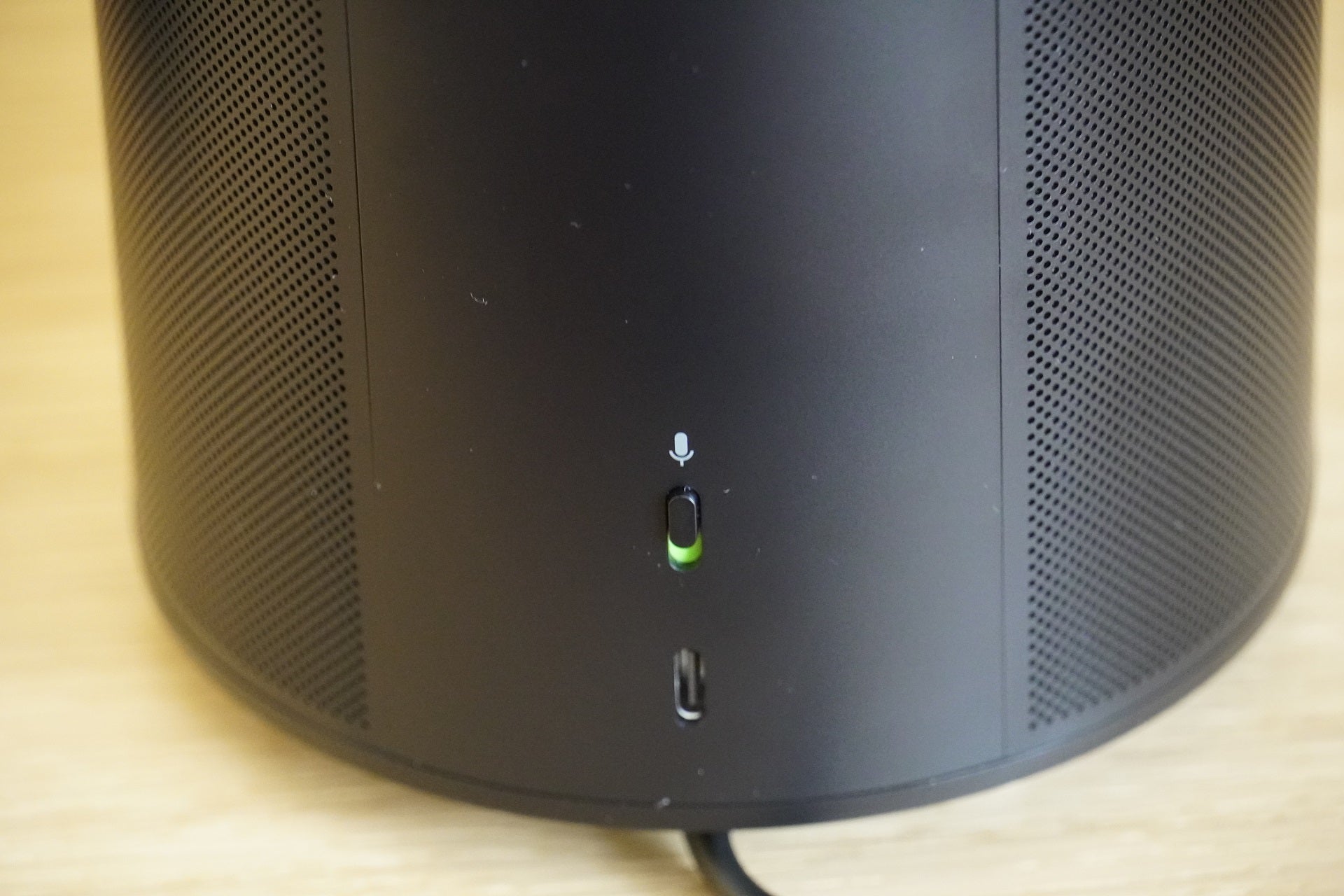
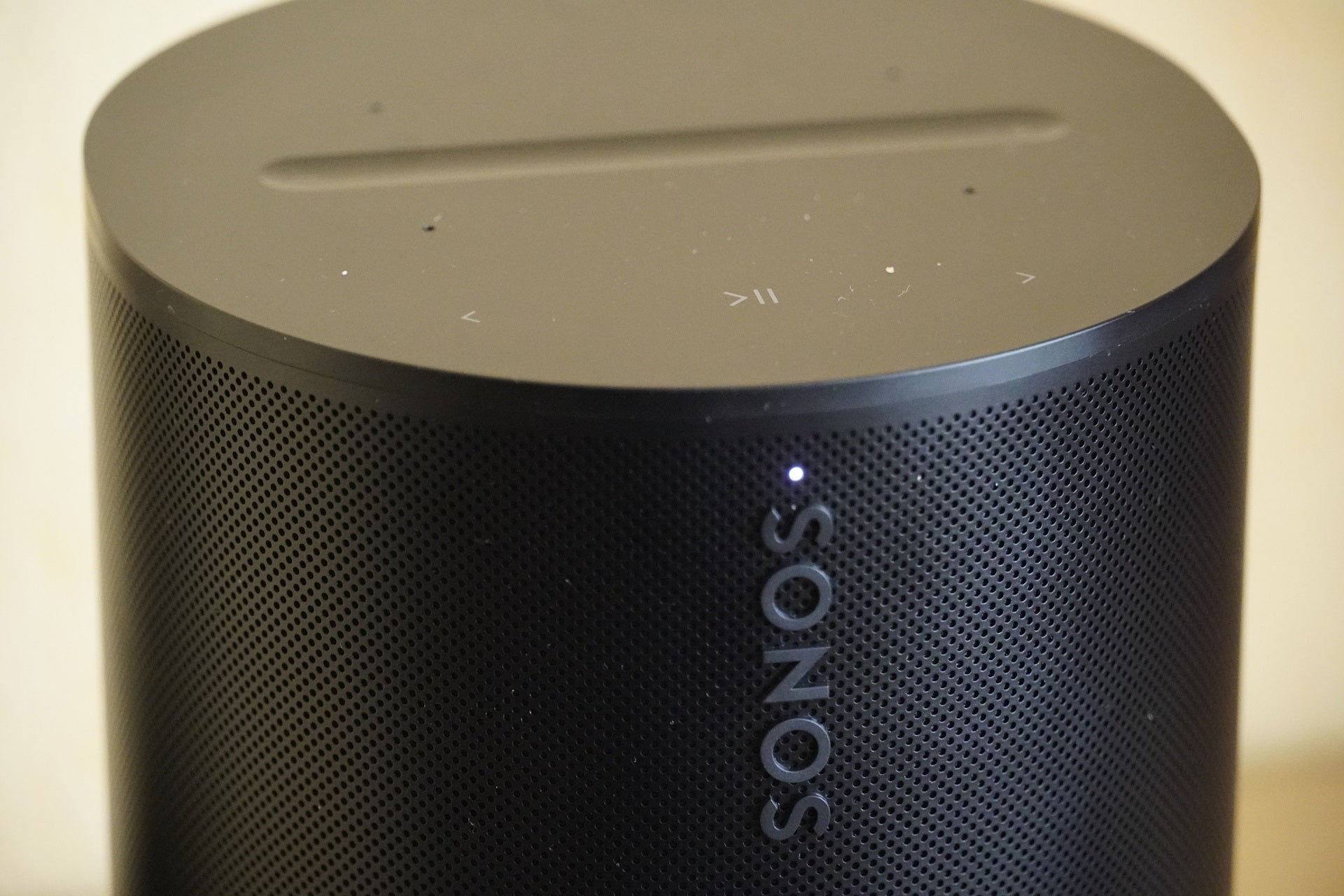
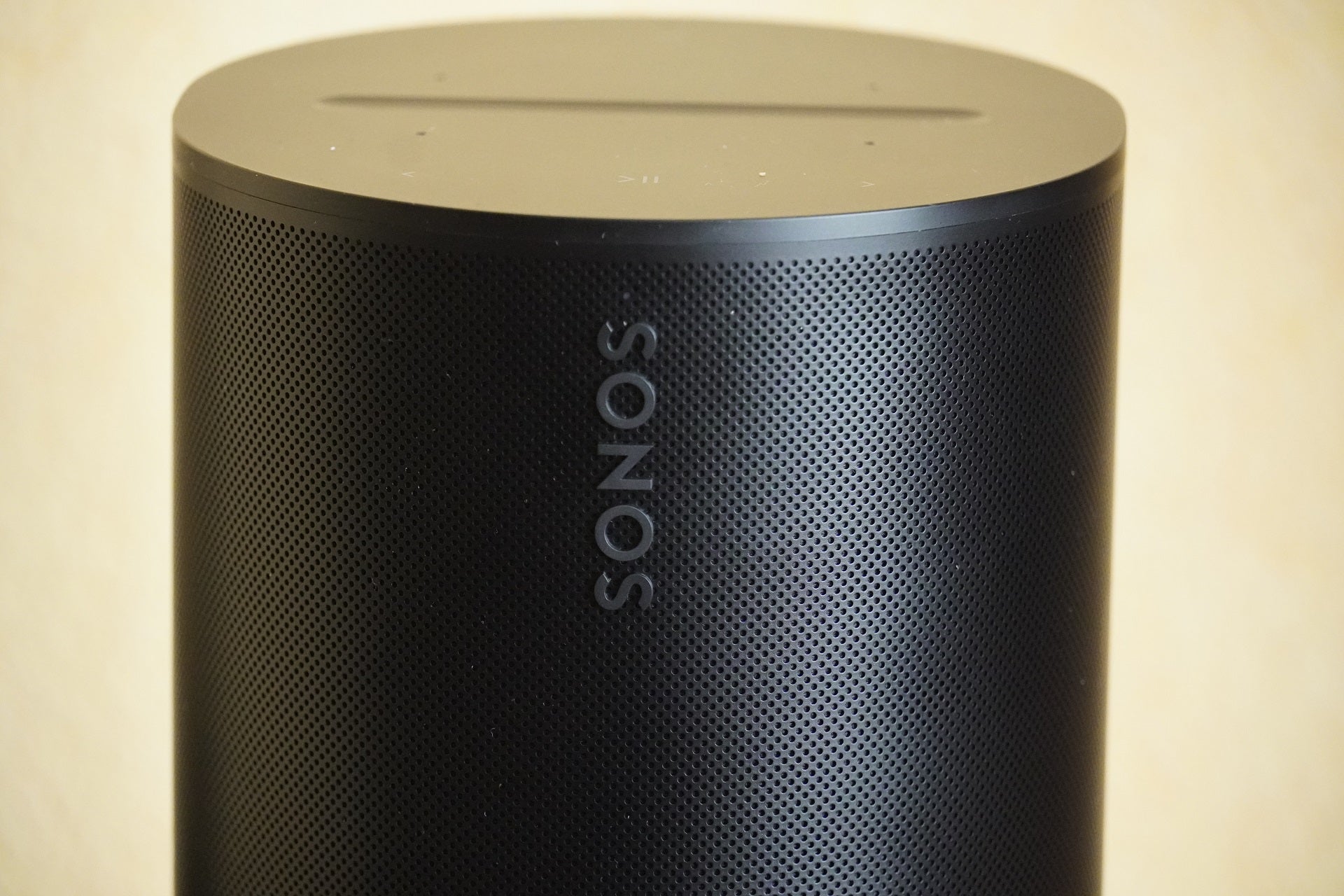

Verdict
A fine upgrade in several ways over the One, the Sonos Era 100 benefits from a sleeker design, reconfigured driver setup and a spate of more accessible features.
Pros
- More emphatic bass delivery than the One
- Quick Tune Trueplay
- Supports Bluetooth connectivity
- Wider sweet spot
- Excellent app interface
Cons
- Hike up in price
- Arguably too bassy
- No adapters included with speaker
Key Features
- Quick Tune TrueplayCalibrates speaker with a tap in the app
- ConnectivitySupports Bluetooth and Wi-Fi
Introduction
The Era 100 has replaced the iconic Sonos One in Sonos speaker line-up, marking the end of one era and the beginning of a new one.
This new era doesn’t mark a change in Sonos’ approach to wireless multi-room sound, but it does represent a change in tone with the Era 100 pitched as a more accessible and mainstream-sounding product.
It is more expensive but is it a step up in the performance?
Design
- Taller, sleeker appearance
- Switch for turning mics off
- USB-C port replaces Ethernet
In a comparison to the now discontinued One, the Era 100 is taller, deeper and around the same width, but its gentle curvature makes it look slimmer. Its footprint is about the same, easily fitting onto surfaces such as kitchen desktops or into bookshelves.
It still adheres to Sonos’ ‘Industrial’ design that matches the rest of its speakers and soundbars. The LED light on top of the speaker has been repositioned to the front so the speaker’s status can be seen from wherever you are.
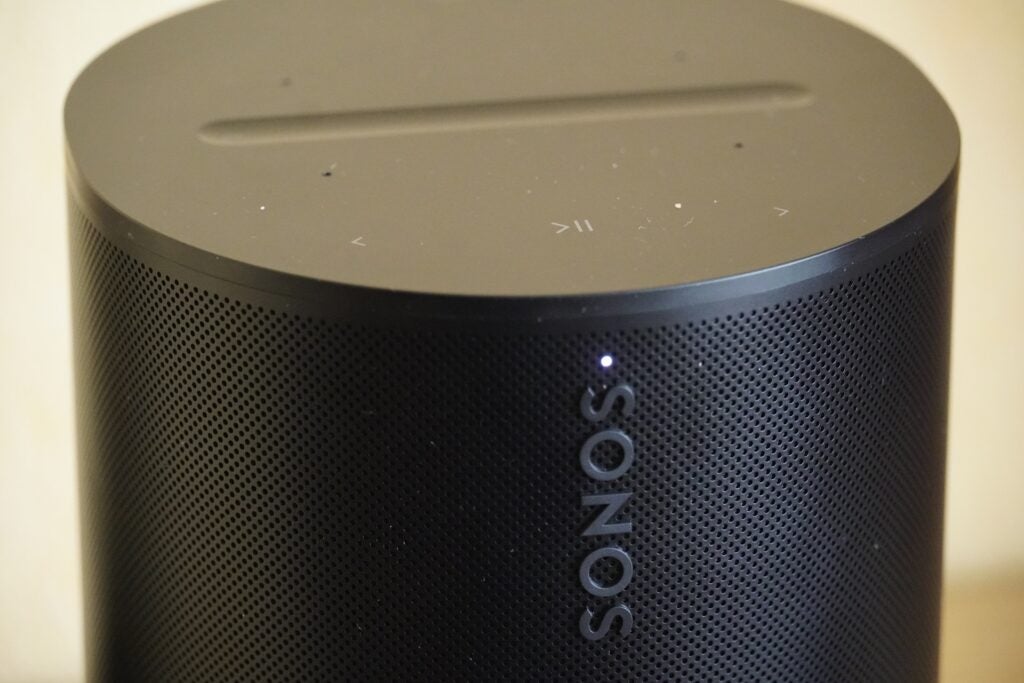
On the top surface are touch capacitive controls for operation (playback/track skipping), with a slider in the middle to manage volume (you can tap either end to increase or decrease).
The built-in microphones can be turned off to stop voice assistants from eavesdropping. There’s also a switch on the back disconnects power from the microphones completely. With that course of action, both voice operation and Trueplay are disabled. Also on the speaker’s rear is a button for Bluetooth pairing.
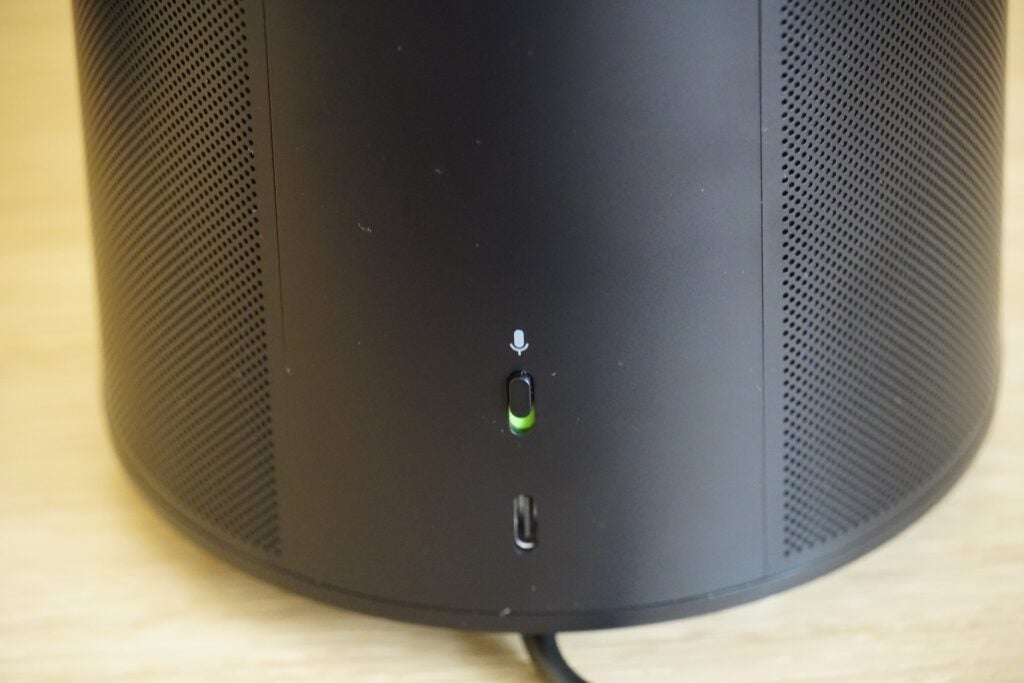
The Ethernet port is replaced by a USB-C port. The speaker can still be hardwired into a router, but now requires an adapter. Sonos sells two of these: Sonos Combo Adapter (Ethernet) and Sonos Line-In Adapter (computer, turntables, etc). The USB port also allows for connection to devices such as a USB-C to Lightning cable for older iPhones.
It’s unfortunate that not one of the adapters are included. Choices of colours remain the standard black and white.
Features
- No Google Assistant integration
- Adds Bluetooth support
- Sonos Voice Control for hands-free playback
Almost everything you’d expect from a Sonos speaker is ticked off here. What isn’t included is Google Assistant as Google has changed its policy on third-party devices, leaving the Era 100 without Google voice support.
For voice operation it’s now a choice of Amazon Alexa and Sonos Voice Control, the latter for managing music. With the Voice Control, say “Hey Sonos”, and you can ask it to play music, or ask for a song, album, radio station or track from a compatible streaming service.
At launch Sonos Voice Control wasn’t set up for Spotify but now you can request music from Spotify and Amazon Music, Pandora, Apple Music, and Deezer. Tidal and Qobuz are still absent.
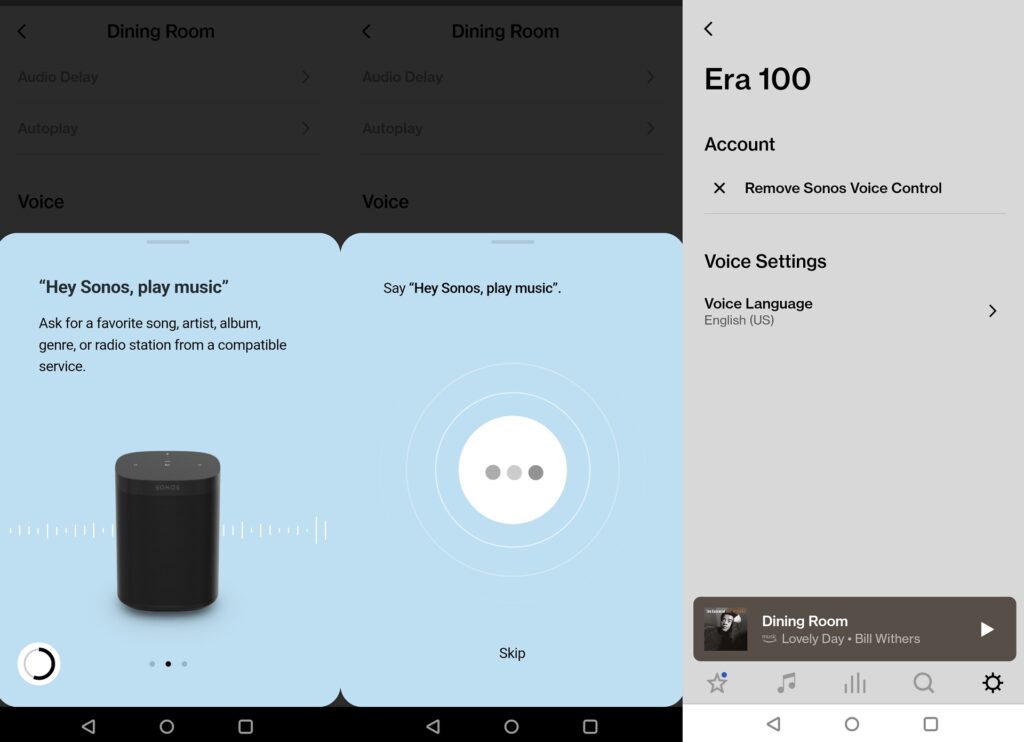
I’ve found that you need to speak loudly or just get closer to the speaker, and in a fun feature, Sonos Voice Control is voiced by Giancarlo Esposito if you change the settings to US English or French in the app.
The Sonos app is where you’ll be able to control various functions and access a wide array of music streaming services such as Sonos Radio, Deezer and Qobuz. It’s an app that remains an intuitive one: easy to navigate, swift in response and visually more upmarket than other control apps.
The Era speakers introduce a new version of Trueplay in Quick Tune. Instead of waving an iPhone around a room to calibrate the speaker, you can tap a button in the Sonos app and the Era 100’s built-in speakers measure the space around it to create a listening profile that matches the room’s acoustics. It’s a speedy process, taking up to 20 seconds.
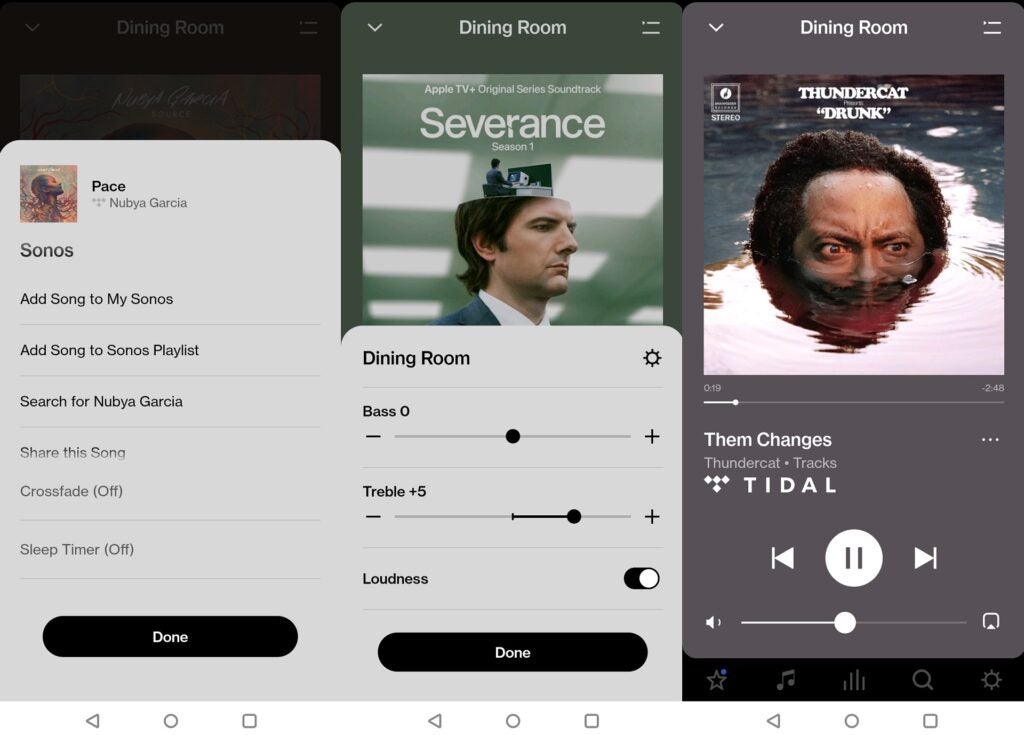
Quick Tune is available on Android devices (with Trueplay having been restricted to iPhone previously) and it’s an addition that makes Sonos speakers more accessible. If you have an iPhone, you still get the choice of the more advanced version of Trueplay. You can manually adjust bass, treble and loudness levels in the Sonos app too.
Pair two Era 100 speakers together and stereo sound is possible, and there is, of course, multi-room. You can wirelessly connect two Era 100s to a Beam Gen 2, Ray, or Arc as rear gunners in a home cinema setup. The Era 100 doesn’t have upfiring speakers like the Era 300, so audio is more directional.
Wireless options include Bluetooth 5.0, and there’s casting over Wi-Fi with Spotify Connect and AirPlay 2 (for iOS devices). Bluetooth requires hammering the volume way up as the speaker is very quiet at normal levels, and in terms of streaming quality it maxes out at AAC.
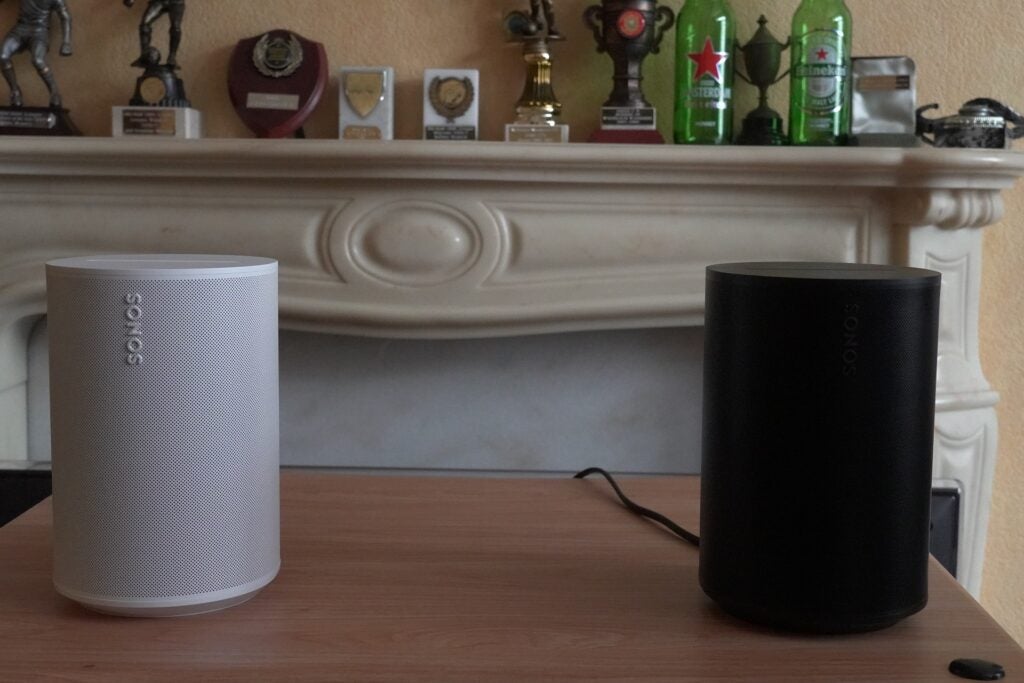
Sound Quality
- Bigger emphasis on bass
- Wider sweet spot
- Not as subtle as the One
Sonos has never been a company that goes into too much specificity about what’s inside its speakers, but I know the Era 100 has three class-D digital amplifiers that power two angled tweeters and a woofer. The tuning has also changed too, with a bigger emphasis on lower frequencies.
This has the effect of the Era 100’s performance being weightier across the frequency range; bass has more heft, the midrange is weightier and treble thicker in description.
Stranger feat. Mikky Ekko benefits from this richer bass with a more explosive presence, and it’s the same with Jacob Collier’s All I Need and Thundercat’s Them Changes. The Era 100 generates more depth, variation, and extension than the original Sonos One could, which was punchy rather than weighty.
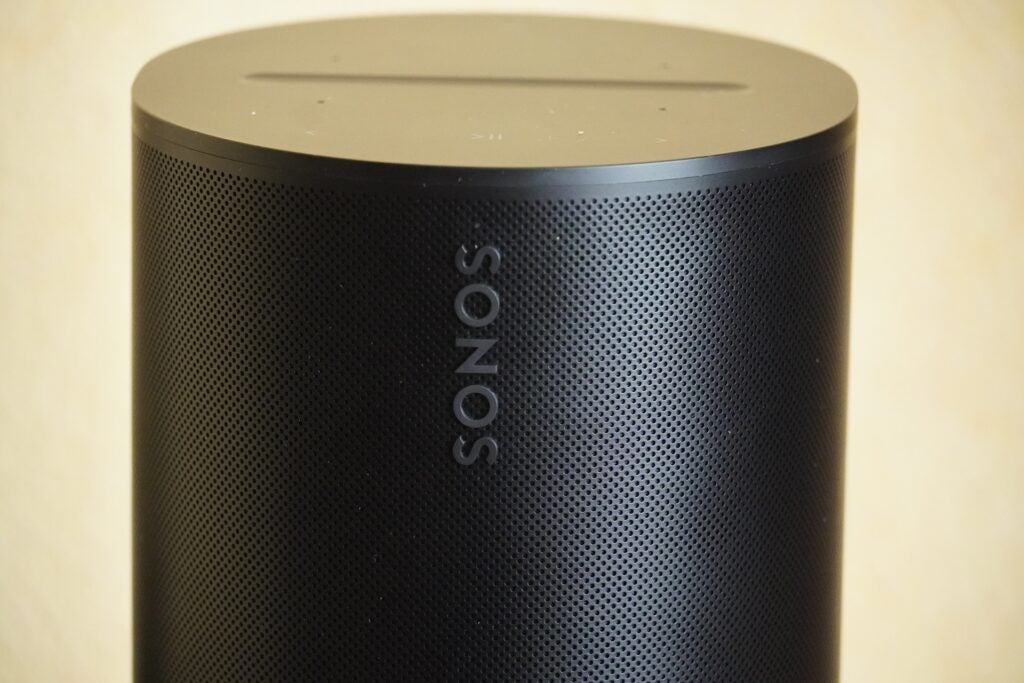
That bass power is not at the expense of vocal clarity either, but the change in tone means the Era 100 lacks that lightness in describing the midrange. While it unearths similar levels of detail, it’s not as clear or defined as either the One or One SL.
When I first reviewed the Era 100 I felt it wasn’t as bright as the One with its treble performance. I’ve come about on that position and feel the treble on the Era 100 stands out more than it did on its predecessor. It still sounds warm but there’s a better sense of separation between the highs and mids, making the former stand out more than it does on a One SL.
Nevertheless, I’d encourage playing with the EQ to alter bass and treble levels, though these changes don’t present themselves in a sharper or brighter manner for high frequencies, but emphasise the treble above the midrange and bass.
Trueplay could almost be described as bass management. Out of the box with no tuning, the Era 100 sounded limp, and after a Quick Tune it was at the races with a punchier, more rapid reproduction of low frequencies. And having placed this speaker in four different positions in two rooms the level of bass has been consistent in each location after each re-tune.
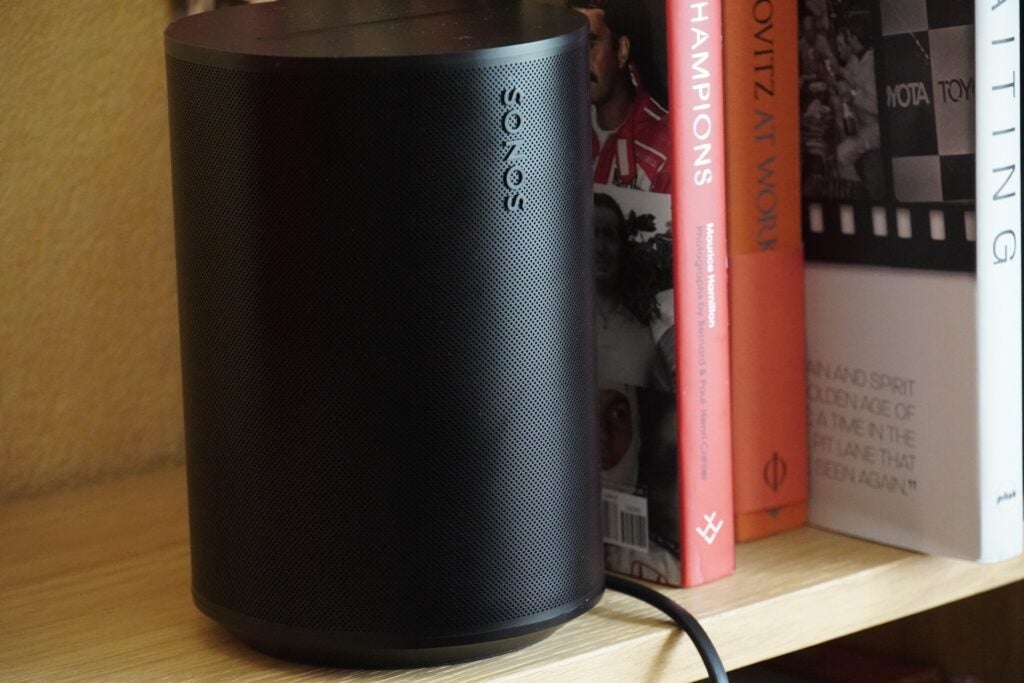
Sonos says to carry out a retune every time the speaker is moved, but I’d say it’s more important to do this if you’re taking the speaker from a freestanding position to one where it’s either enclosed or reinforced by something behind it. A retune helps get bass back in step.
Turn the volume up and the DSP (digital signal processing) kicks in, and bass levels don’t increase in step with overall loudness. In fact, it becomes smaller and hollow, but unless the Era 100 is used for parties, I’d struggle to see why you’d need ever need to go above level 50. At volume 40 it’s a big, room-filling speaker. And with the angled tweeters there’s a wider listening spot than there was on the Sonos One, the Era 100 sounds more consistent wherever I am in a room.
The bass performance is bigger than the similarly priced Denon Home 150, although the Denon is the richer, more musical-sounding speaker of the two. The Sonos isolates voices better than the Home 150, but the richness of the Denon’s midrange makes for a more expressive performance with voices such as Phoebe Bridgers’ in her Punisher album, and Janelle Monae’s in Can’t Live Without Your Love.
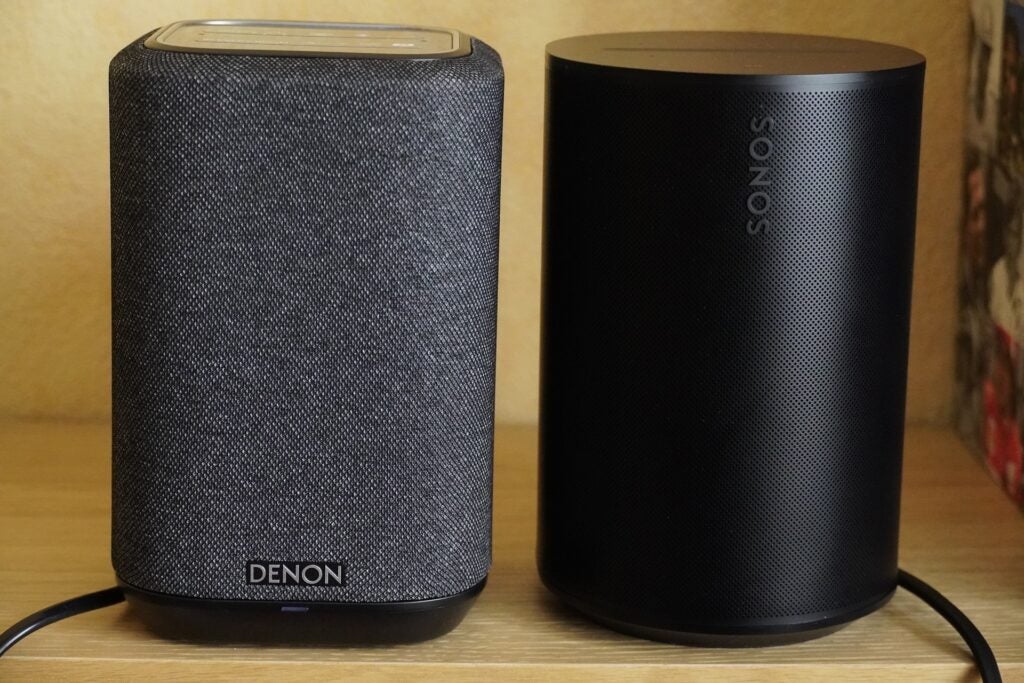
Latest deals
Should you buy it?
If you felt the One lacked bass
A bigger, more powerful bass is means the Era 100 is more capable with the lower end than the One, though arguably at the expense of subtlety.
If you don’t want to pay more
A jump of £50 in the UK makes it more expensive than the Denon Home 150, a wireless speaker with similar set of skills.
Final Thoughts
Is this new era of Sonos speakers better than the old one? In some ways yes. The Era 100 is a powerful, weighty speaker, more capable with the low end than the Sonos One was, but this comes at the expense of midrange subtlety.
The increase in bass makes it more of mainstream-sounding speaker than the previous mode, giving music genres such as R&B, Hip Hop and Pop more impact and excitement, as well as being more accessible with the inclusion of Bluetooth and Quick Tune Trueplay.
At the end of the day the Era 100 is a more fun-sounding wireless speaker but this comes with a bigger price tag. While the Era 100 may not be a home run over its predecessor, there’s much to enjoy about its music performance.
How we test
FAQs
Google has changed the requirements for supporting their smart assistant on third-party devices, but Sonos says it’s “a heavy engineering lift” to include it on the platform. Whether it comes to the Sonos platform in the future is up to Google.



